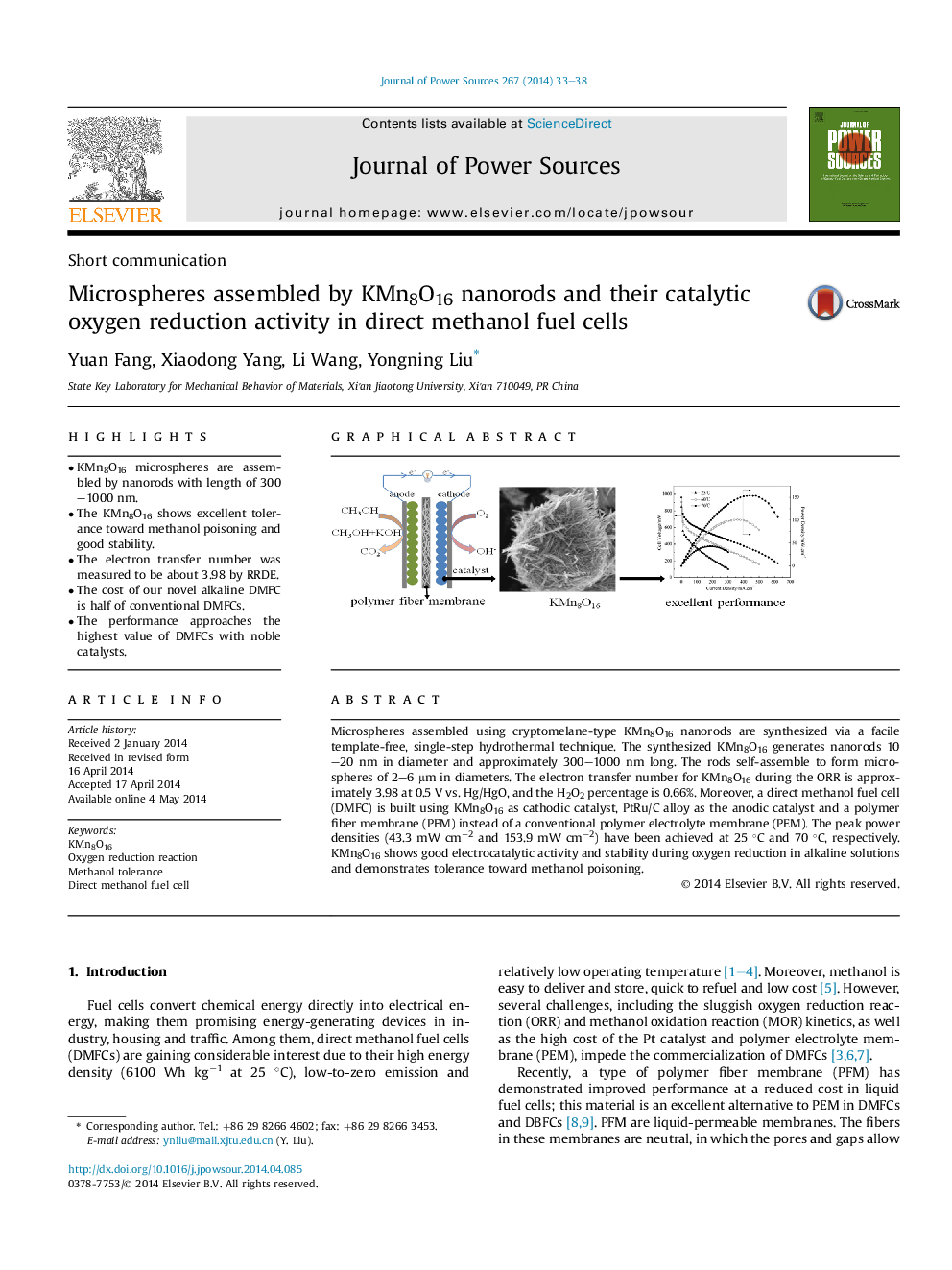| Article ID | Journal | Published Year | Pages | File Type |
|---|---|---|---|---|
| 1286570 | Journal of Power Sources | 2014 | 6 Pages |
•KMn8O16 microspheres are assembled by nanorods with length of 300–1000 nm.•The KMn8O16 shows excellent tolerance toward methanol poisoning and good stability.•The electron transfer number was measured to be about 3.98 by RRDE.•The cost of our novel alkaline DMFC is half of conventional DMFCs.•The performance approaches the highest value of DMFCs with noble catalysts.
Microspheres assembled using cryptomelane-type KMn8O16 nanorods are synthesized via a facile template-free, single-step hydrothermal technique. The synthesized KMn8O16 generates nanorods 10–20 nm in diameter and approximately 300–1000 nm long. The rods self-assemble to form microspheres of 2–6 μm in diameters. The electron transfer number for KMn8O16 during the ORR is approximately 3.98 at 0.5 V vs. Hg/HgO, and the H2O2 percentage is 0.66%. Moreover, a direct methanol fuel cell (DMFC) is built using KMn8O16 as cathodic catalyst, PtRu/C alloy as the anodic catalyst and a polymer fiber membrane (PFM) instead of a conventional polymer electrolyte membrane (PEM). The peak power densities (43.3 mW cm−2 and 153.9 mW cm−2) have been achieved at 25 °C and 70 °C, respectively. KMn8O16 shows good electrocatalytic activity and stability during oxygen reduction in alkaline solutions and demonstrates tolerance toward methanol poisoning.
Graphical abstractFigure optionsDownload full-size imageDownload as PowerPoint slide
